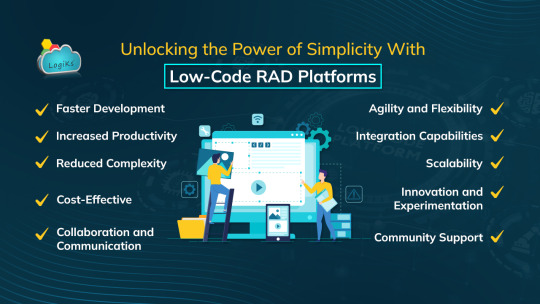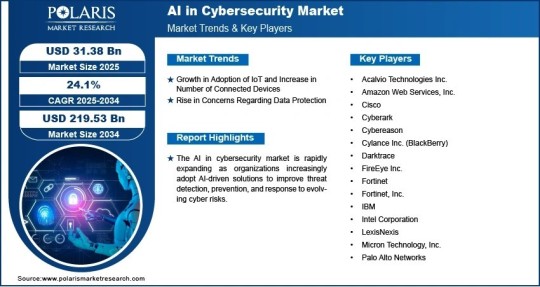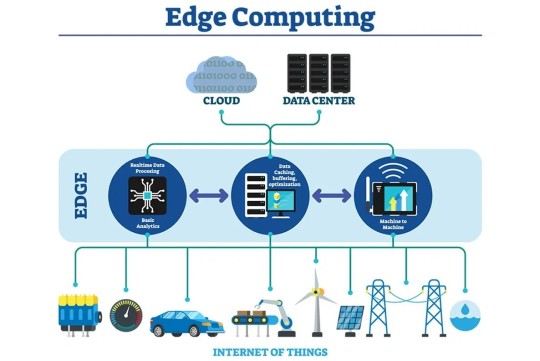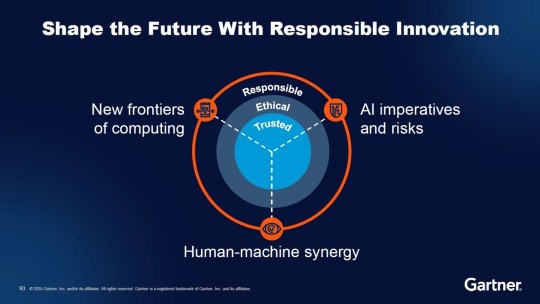#Low-Code AI
Explore tagged Tumblr posts
Text
🤖 Discover how Xrm.Copilot is revolutionizing Dynamics 365 CE with AI! Learn about its key capabilities, integration with the Xrm API, and how developers can build smarter model-driven apps. Boost CRM productivity with conversational AI. #Dynamics365 #Copilot #PowerPlatform #XrmAPI #CRM #AI
#AI in Dynamics#Azure OpenAI.#CRM AI#CRM Automation#dataverse#Dynamics 365 CE#Low-Code AI#Microsoft Copilot#Model-Driven Apps#Power Platform#Xrm API#Xrm.Copilot
0 notes
Text
"That’s when it hit me: A.I. is just as much a challenge to numeracy — our knowledge and ability to use mathematics and reason quantitatively — as it is to literacy.
In February, the A.I. engineer Andrej Karpathy reported on X that he was engaged in a new form of software development he called “vibecoding.” Using nothing more than a series of spoken prompts to a chatbot, he was conducting ad hoc experiments on data and said he would “barely even touch the keyboard.” He said this allowed him to “forget that the code even exists,” leaving the grunt work to the A.I. and simply directing from above. Mr. Karpathy’s post went viral, and many others acknowledged they were doing the same.
By some accounts, though, vibecoding isn’t going well. The code that Mr. Karpathy’s prompts create has been reported to be inefficient and riddled with irreversible errors. Worse, programmers using the method say they’ve found themselves not merely forgetting that code exists but forgetting how to code. As is the case with reading and writing a language, code is one of those things where if you don’t use it, you lose it. Early studies indicate that humans who use A.I. could become less creative over time."
#AI tag#i was just having a conversation with M about something semi-related to this the other day#i was like if they use AI to eliminate entry-level jobs#then how will they train a new generation of people to advance to non-entry-level jobs?#you can't skip the basics!#if you can't code because you never learned and/or never had ample opportunities to practice in a low-stakes role#how will you become an expert who can evaluate the code and fix mistakes
4 notes
·
View notes
Text
yk its just. so goddamn fun watching the rise of llms as an artist, writer *and* programmer. oh haha yeah the computers are gonna take over literally any potentially tolerable career i could have? cool. great. i cant wait
#like i dont think that llms will ever be able to fully take over those roles#not well anyway#but i dont think thatll stop corporations from trying to force them in there eventually!#who cares about low quality work when you dont have to pay creators right#i mean. i guess i could get a job as one of the guys who manually fix gpts shit ass generated code until businesses give up on ai#but christ that sounds depressing#anyway yeah. fuck computers#why do i have to be in three of the roles techbros are targeting#ben affleck smoking dot png#me.txt
3 notes
·
View notes
Text
Automation and AI Architect / Advisor (Remote)
Job title: Automation and AI Architect / Advisor (Remote) Company: Hive Mechanics Job description: . Tasks You hands-on support our Partners Companies with designing and building no–code Automation and AI solutions…Backed by Nordstar Venture Studio, Hive Mechanics focuses on ideating, designing and implementing practical No–Code… Expected salary: €50000 – 80000 per year Location: London Job date:…
#5G#Aerospace#agritech#artificial intelligence#Automotive#Broadcast#business-intelligence#cleantech#cloud-native#deep-learning#DevOps#Ecommerce#ethical AI#ethical-hacking#fintech#Frontend#full-stack#it-consulting#legaltech#low-code#metaverse#mlops#Networking#NFT#No-Code Solutions Architect#rpa#software-development#technical-writing#visa-sponsorship
0 notes
Text
The Bold Shift: Why IT Leaders Must Champion Hyper-automation Now.
Sanjay Kumar Mohindroo Sanjay Kumar Mohindroo. skm.stayingalive.in Hyper-automation is not a tech upgrade—it’s a leadership challenge. Discover why bold IT leaders are driving the shift. Hyper-automation is no longer just a buzzword. It’s the lifeline for large enterprises that want to survive the next ten years. With rising operational costs, inconsistent manual processes, and growing…
#AI-driven automation#automation strategy#digital operations#digital transformation#enterprise automation#future of IT#hyper-automation#IT Leadership#low-code automation#modern IT stack#News#process automation at scale#RPA#Sanjay Kumar Mohindroo
0 notes
Text
How Generative AI is Powering the No-Code Development Revolution
Generative AI has revolutionized app creation by removing the need for coding expertise. Consequently, software development is no longer an exclusive domain of engineers.
Now business analysts, marketers educators and entrepreneurs– basically anyone with an idea– can also bring those ideas to life in the form of working applications!
But what makes these technologies so effective? Let's explore some key factors:
Simplified drag-and-drop interfaces: Visual builders have made coding obsolete; you don't need to write code anymore.
AI integration: Tools such as Bubble. io and Zoho Creator can propose UI components, logic flows, and even content tailored to your requirements.
Real-time prototyping: You can now build, test, and refine your concepts quickly— without waiting in a lengthy development queue.
Workflow automation: Hassle-free integration is possible thanks to pre-built connectors— for instance linking up with CRM systems, email databases plus so much more! Also, AI can offer useful suggestions wherever needed.
Faster time-to-market: Launch your minimum viable products within days rather than dragging it out over months on end.
Lower costs: Forget the expense of hiring large development teams just for preliminary stages.
Better collaboration: People without a technical background can now have meaningful input into application development processes.
Scalability: Numerous no-code platforms provide paid options designed explicitly for scaling at the enterprise level.
If you're pressed for time, money, or developers, then no-code/low-code development services enhanced with Generative AI might be just what you need– building fast affordable scalable digital solutions has never been easier!
Why not give it a go? Start exploring tools like Zoho Creator Replit AI and Bubble today. Unlock innovation regardless of whether you have any prior coding experience!
Click here to read full blog: https://www.mooglelabs.com/blog/generative-ai-services-with-low-code-no-code-development

#mooglelabs#low code app development#no code#ai ml development#artificial intelligence#technology#technologysolutions#aiservices
0 notes
Text
Product Engineering in Software Engineering: Latest Trends
Explore how Product Engineering in Software Engineering drives innovation with AI, cloud, low-code, and modern development trends.
Building digital products today requires more than just good code. As a result, companies are shifting to smarter product development methods. As businesses strive to meet rising customer expectations, they often seek help from a software product engineering services company.
These companies combine technology, design, and strategy to bring innovation faster and more reliably.
Therefore, let’s explore how product engineering in software engineering is evolving and what trends are shaping its future.
Why Product Engineering in Software Engineering Drives Modern Products
The idea behind product engineering in software engineering is to build digital products that solve real problems quickly and efficiently. Rather than creating products in silos, teams now work together using shared goals, fast feedback, and constant iteration.
Continuous Discovery
First of all, product teams no longer wait months to understand customer needs. Instead, they perform weekly research sprints to validate every new idea. These discoveries reduce rework and help create user-focused solutions from day one. Furthermore, continuous discovery aligns the product vision with real-time market shifts.
Secure by Design
In the past, security was a final step in the product life cycle. Now, developers integrate security scans into their daily coding process. This proactive approach prevents threats and saves time on future fixes. Additionally, building security from the start improves trust and reduces compliance risks………….
#Product Engineering in Software Engineering#Software Product Engineering Services#AI in Product Development#Low-Code Development#Cloud Product Engineering#Edge Computing Trends#Composable Architecture#Responsible AI#Hyper-Personalization#Sustainable DevOps#Digital Product Innovation#Future Skills for Product Teams#Cloud-Native Security#Continuous Discovery#Irom Technologies
0 notes
Text
Unlocking The Power Of Simplicity With Low Code Rad Platforms

In a dynamic era driven by the constant evolution of technology, the demand for rapid and efficient application development has never been more pronounced. Low-Code Rapid Application Development Platforms, a transformative method that empowers developers to create applications with minimal hand-coding. This approach streamlines the application-building process, reducing reliance on traditional programming languages.
Low-Code RAD (Rapid Application Development) platforms offer pre-built components, accelerating development cycles and enabling quick iterations. In this landscape of innovation, Low-Code Development emerges as a game-changer, aligning with agile principles and providing a solution for organizations seeking speed, flexibility, and cost-effectiveness in the ever-evolving digital landscape. This blog delves into the benefits, scenarios for adoption, and the potential future impact of Low-Code RAD Framework, shedding light on its pivotal role in shaping the future of application development.
Click here to read more about the Low code RAD Framework!
1 note
·
View note
Text
How to Measure Low-Code ROI for Your Enterprise: A Complete Guide for 2025

Digital speed is the new business currency. As enterprises race to innovate, stay competitive, and meet growing customer demands, low code platforms have become the secret weapon behind faster app delivery, streamlined workflows, and cost-effective development.
But here’s the million-dollar question: How do you measure the true ROI of your low code investment?
In this blog, we break down a practical, step-by-step guide to help you measure the ROI of low code platforms in 2025. Whether you’re a CTO aiming for scalability, a business leader seeking results, or a tech-savvy founder ready to transform operations — this guide is your blueprint for making smarter, data-backed decisions.
What Is a Low-Code Platform?
A low-code platform is an application development platform that allows developers and business users to build applications with minimal hand-coding. By using visual interfaces, drag-and-drop tools, and pre-built templates, these platforms reduce the complexity and time required for development.
Low-code app builders empower organizations to:
Rapidly prototype and deploy applications
Minimize development cycles
Reduce reliance on high-cost technical resources
Foster collaboration between IT and business teams
Why Measuring ROI Is Critical in 2025
In 2025, the emphasis on digital agility, cost-efficiency, and sustainable innovation is greater than ever. Decision-makers demand clear financial justification for every tech investment. Here’s why measuring low-code ROI is crucial:
Justifies Investment: Proves the value of the low-code strategy to stakeholders
Optimizes Budgeting: Identifies the most profitable areas to invest further
Improves Strategy: Reveals development bottlenecks and areas of improvement
Encourages Adoption: Showcases success metrics that boost internal buy-in
What Is Low-Code ROI?
Low-code ROI is a measurement of the value gained from using a low-code platform relative to the resources invested — including time, money, and human effort.
Formula:
ROI = [(Net Return from Low-Code Projects — Cost of Investment) / Cost of Investment] × 100
While this formula offers a baseline, ROI should be assessed both quantitatively and qualitatively, factoring in tangible benefits like faster time to market and intangible gains like improved collaboration and employee satisfaction.
Key Metrics to Measure Low Code ROI in 2025
Measuring ROI from a Low Code platform involves both quantitative and qualitative metrics. Here’s a breakdown of the most relevant ones for 2025:
1. Development Time Saved
One of the clearest advantages of low code is faster development. Compare the estimated project duration using traditional coding methods versus the actual timeline with your Low Code platform.
Metric to track: (Traditional Timeline — Low Code Timeline) / Traditional Timeline x 100 = % Time Saved
Example: A CRM that usually takes 90 days now takes 30 days — a 66% time reduction.
2. Cost Savings
Calculate how much you’ve saved in terms of reduced developer hours, fewer tools/licenses, and lower maintenance overhead.
Consider:
Fewer developers needed.
Less reliance on third-party APIs.
Shorter training cycles.
Metric to track: (Traditional Cost — Low Code Cost) / Traditional Cost x 100 = % Cost Saved
3. Increased Application Output
Low code platforms like FAB Builder empower teams to release more apps in less time. Track how many applications were deployed in a given time period compared to before.
Metric to track: Apps delivered per month/year before vs. after adoption.
4. User Productivity
When internal tools are built faster and tailored to user needs, teams become more productive. Survey users on how much faster they can perform tasks using newly developed apps.
Metric to track: Task completion times, error rates, and satisfaction scores before vs. after app implementation.
5. IT Backlog Reduction
A common issue in large enterprises is the overflowing backlog of app requests. With Low Code tools, even non-developers can take on app development, reducing the burden on IT.
Metric to track: Number of backlog items cleared or delivered by citizen developers.
6. Quality and Error Rates
Low code tools often produce cleaner, more standardized code. With FAB Builder’s AI-powered code generation, human error is significantly reduced.
Metric to track: Number of bugs or issues per release compared to traditional development.
7. Revenue Uplift (if applicable)
For apps directly tied to customer engagement or monetization (e.g., e-commerce tools), track how quickly they were developed and what impact they had on revenue.
Metric to track: Uplift in revenue generated from low-code developed apps.
Exploring FAB Builder — A Next-Gen Low-Code Platform
Among the standout tools in the low-code landscape, FAB Builder is making waves as a cutting-edge application development platform. It provides everything you need to create scalable applications without writing complex code.
Key Features of FAB Builder
Visual Data Modeling With a powerful drag-and-drop interface, users can easily define their database schema without writing SQL or backend logic. This eliminates traditional development barriers and accelerates project kickoff.
AI-Powered Code Generation FAB Builder includes an AI code generator that handles repetitive code tasks, allowing developers to focus on solving critical business challenges instead of coding boilerplate.
Pre-built Templates Offers ready-to-use templates for multiple industries and use cases, including UI components, data models, and REST APIs.
Flexible UI Generation Enables building responsive frontends using popular frameworks. The page builder allows full customization to suit your brand identity.
Extensible and Modular Architecture Easily integrate with third-party services or scale up by adding new modules without starting from scratch.
Full Code Ownership Unlike many platforms that lock users in, FAB Builder provides complete access to the generated code. You can export, customize, and host it anywhere.
One-Click Deployment Simplifies deployment across dev, staging, and production environments — a game-changer for DevOps teams.
If you’re looking for a low code app builder that combines speed, AI-driven automation, and developer control, FAB Builder is an excellent choice.
Real-World Low-Code ROI Examples
Let’s explore some practical scenarios of how enterprises benefit from low-code platforms like FAB Builder:
Insurance Sector: A claims processing app that once took 9 months to develop was rolled out in just 6 weeks — cutting costs by 65%.
Retail Chains: Multiple store-level inventory tools were launched simultaneously without IT dependency, improving supply chain visibility.
Healthcare: Patient intake forms and internal dashboards were digitized rapidly, improving patient experience and back-office productivity.
How to Implement a Low-Code ROI Measurement Strategy
To get a holistic view of your low-code investments, follow these steps:
Set Clear Objectives Define what success looks like: cost savings, delivery time, customer engagement, etc.
Establish Baseline Metrics Before deploying low-code, record traditional development timelines, costs, and delivery rates.
Use the Right Tools Use analytics dashboards, user feedback, and project tracking tools to monitor progress.
Get Stakeholder Feedback Involve business teams, end users, and IT professionals to gauge satisfaction and usability.
Review Periodically ROI evolves over time — review every quarter or after each major app release.
Low-Code for Enterprises: Competitive Advantage in 2025
In 2025, speed to innovation will be a top competitive metric. Enterprises that invest in low-code platforms like FAB Builder are positioned to:
Build agile tech stacks
Respond faster to market changes
Launch products in record time
Drive digital transformation across all departments
By measuring low-code ROI effectively, enterprises don’t just track success — they create a blueprint for continuous innovation.
Conclusion
Adopting a low-code platform is not just a cost-saving initiative — it’s a strategic move to fuel business innovation. With tools like FAB Builder, enterprises can harness AI-powered development, rapid deployment, and complete control over their application lifecycle. But success doesn’t stop at development; measuring low-code ROI ensures that your investment yields tangible, scalable, and long-term value.
FAQs:
Q1. How long does it take to see ROI from a low code platform? A: Most enterprises start seeing measurable ROI within 3 to 6 months, especially in terms of reduced development time, faster app launches, and improved team productivity.
Q2. Can low code platforms like FAB Builder be used for large-scale enterprise apps? A: Yes. Modern low code platforms like FAB Builder are built to handle complex workflows, high-performance backends, and scalable applications suitable for enterprise-level deployment.
Q3. What types of apps show the best ROI with low code? A: Internal tools, workflow automation apps, customer portals, and MVPs (Minimum Viable Products) tend to deliver the highest ROI due to faster deployment and frequent updates.
Q4. Is ROI from low code just about cost savings? A: Not at all. ROI includes faster time-to-market, reduced IT backlog, improved customer experience, automation gains, and enhanced innovation — all of which add long-term strategic value.
0 notes
Text
Experts Reveal: The 10 IT Trends That Will Redefine Technology in 2025!

As we approach 2025, the pace of technological innovation is accelerating faster than ever before. From intelligent agents to immersive digital environments, the next wave of IT trends is set to redefine how we work, communicate, and make decisions. Businesses that understand and leverage these changes early on will be in the strongest position to lead in the digital economy.
Here’s a look at the top 10 IT trends that will define the future of technology in 2025:
1. Agentic AI Takes the Lead

AI is evolving into something far more autonomous — Agentic AI. These intelligent agents can perceive, reason, act, and learn independently. Unlike traditional AI, they don’t just follow rules — they achieve goals.
In 2025, expect to see AI agents managing workflows, enhancing customer service, and making real-time decisions with minimal human input. With 99% of developers already exploring agentic models, we’re entering the “Year of the Agent.”
2. Quantum Computing Becomes Practical

Once limited to labs and theory, quantum computing is moving into real-world applications. It’s revolutionizing fields like drug discovery, battery design, and financial modeling by solving problems classical computers struggle with.
While full-scale quantum computing is still evolving, 2025 will mark a turning point — with many businesses accessing quantum capabilities via the cloud.
3. Cybersecurity Powered by AI

Cyber threats are more advanced than ever, and AI is stepping up to defend digital infrastructure. AI-driven cybersecurity tools detect threats in real time, predict future attacks, and automate incident responses. With over half of organizations already experiencing at least one cyberattack in the past year, the shift to AI-based defense is not optional — it’s essential.
4. Edge Computing Becomes the Backbone of IoT

With nearly 75 billion connected devices expected globally, edge computing — where data is processed closer to the source — will become the standard. It reduces latency, cuts bandwidth costs, and enhances security. Edge computing is especially crucial for time-sensitive applications like autonomous vehicles, smart cities, and industrial automation.
5. Ambient Computing Redefines UX

Technology is becoming invisible. Ambient computing — systems that respond without direct interaction — creates seamless user experiences. Smart environments adapt lighting, temperature, or digital displays automatically based on human behavior.
By 2026, 60% of developed world households will have some form of ambient tech. In 2025, it becomes a defining feature of intelligent living.
6. Low-Code/No-Code Platforms Empower Everyone

Software development is no longer exclusive to programmers. Low-code and no-code platforms enable business users to build apps visually, drastically reducing development time.
By 2025, 70% of new enterprise applications will be built using these tools. This shift not only accelerates innovation but also helps bridge the talent gap in IT.
Want the full list of all 10 top IT trends that will redefine the future of technology? Read out the complete article here: https://digitalconfex.com/top-10-it-trends-that-will-define-the-future-of-technology-in-2025
Final Thoughts
The IT trends of 2025 go far beyond surface-level upgrades. They represent deep structural shifts in how technology is designed, deployed, and experienced. Businesses that invest in understanding these trends today will be best equipped to lead tomorrow.
If you’re a tech leader, innovator, or strategist looking to stay ahead of the curve, now is the time to align your roadmap with these trends. Start with small experiments, scale what works, and stay flexible as these technologies evolve.
#top 10#tech trends#agentic ai#artificial intelligence#cybersecurity#quantumcomputing#no code#low code#ambient#edge computing#green technology#blockchain#wearabletrends
0 notes
Text
Unlocking Growth with Microsoft Dynamics 365 ERP Solutions
In a fast-paced digital world, businesses need more than just operational efficiency—they need intelligence, agility, and scalability. This is where Microsoft Dynamics 365 ERP solutions come into play. As companies strive to optimize operations, manage finances, and support decision-making, Dynamics 365 ERP emerges as a comprehensive, cloud-powered platform built for modern enterprise demands.
In this blog, we explore how organizations can unlock long-term growth by leveraging Dynamics 365 ERP, discuss implementation strategies, and highlight how a trusted partner like Acumant ensures successful ERP transformation.
What is Microsoft Dynamics 365 ERP?
Microsoft Dynamics 365 ERP is a suite of enterprise resource planning applications designed to help businesses automate core processes, streamline operations, and gain deep insights through real-time data. Unlike legacy systems, Dynamics 365 ERP is modular, cloud-native, and deeply integrated with the broader Microsoft ecosystem—including Power Platform, Azure, and Microsoft 365.
Core Modules Include:
Finance: Budgeting, forecasting, financial reporting
Supply Chain Management: Inventory, procurement, manufacturing
Project Operations: Resource planning, time tracking, billing
Commerce: Retail, e-commerce, POS systems
HR: Payroll, employee self-service, performance tracking
Why Businesses Choose Microsoft Dynamics ERP
1. End-to-End Integration
From CRM to financial reporting, everything integrates seamlessly across Microsoft applications.
2. Cloud-First Architecture
Access from anywhere with scalable cloud infrastructure and data security.
3. Real-Time Insights
Built-in analytics and dashboards powered by Power BI deliver actionable insights on demand.
4. Modular Flexibility
Deploy only what your business needs and expand as required—reducing cost and complexity.
5. AI and Automation
Intelligent automation through AI and machine learning supports predictive operations.
Key Benefits of Dynamics 365 ERP Solutions
Streamlined Operations: Automate repetitive tasks and reduce manual errors
Improved Collaboration: Unified platform boosts cross-team communication
Enhanced Decision-Making: Real-time data visualization with Power BI
Reduced IT Overhead: Cloud deployment removes the burden of infrastructure management
Scalable Infrastructure: Ideal for growing SMBs and large enterprises alike
Acumant’s Role in ERP Implementation
Implementing an ERP system is a strategic investment, and success depends heavily on the implementation partner. Acumant specializes in:
✔ Tailored ERP Roadmaps
Customized ERP design based on industry, scale, and specific business challenges.
✔ Seamless Data Migration
Secure, accurate transfer of legacy data to the Dynamics platform.
✔ Change Management Support
Training, documentation, and user adoption strategies for a smooth transition.
✔ Post-Implementation Optimization
Continuous monitoring and system refinement to align with business evolution.
Industry Use Case: Retail Expansion with Dynamics 365 ERP
Scenario: A mid-sized retailer expanding into e-commerce needs a unified platform to manage inventory, sales, and customer data.
Solution: Dynamics 365 ERP with Commerce and Supply Chain modules. Integrated with Low-Code Solutions to build a custom inventory app, and CRM tools for better customer engagement.
Outcome: 35% improvement in inventory turnover, 20% faster order fulfillment, and real-time performance tracking with Power BI.
How to Get Started with ERP Transformation
Assess Readiness: Evaluate current systems, data health, and resource capabilities
Define Goals: Align ERP features with business objectives (e.g., automation, compliance)
Partner with Experts: Choose a trusted implementation partner like Acumant
Plan & Execute: Create a phased rollout strategy, ensuring minimal disruption
Monitor & Optimize: Use analytics for continuous performance improvement
Future of ERP: What Lies Ahead
Hyper-Automation: Integration of RPA and AI for predictive and prescriptive analytics
Unified Data Ecosystems: Tighter integration with tools like Microsoft Fabric and Azure OpenAI
Citizen Development: Empowering business users to build apps via low-code tools like Power Apps
Sustainability Tracking: ESG and carbon tracking modules emerging in ERP systems
Conclusion
Microsoft Dynamics 365 ERP solutions are not just tools—they are growth enablers. With deep integration, real-time insights, and scalable deployment, they empower businesses to move faster and smarter. Whether you're streamlining finances, optimizing operations, or planning global expansion, Dynamics ERP provides a solid foundation.
Start your transformation today with a consultation from Acumant’s ERP experts.
Internal Links:
CRM Solutions
Low-Code App Development
QA & Operations
Data & AI
0 notes
Text
🧠 Build a GPT Assistant to Communicate with Dynamics 365 CRM
With the power of OpenAI’s GPT models and the flexibility of Microsoft Dynamics 365 CRM (Dataverse), you can now build intelligent assistants that automate CRM tasks, answer queries, and streamline operations. In this article, I’ll walk you through building a basic GPT that connects to Dynamics 365 CRM. ✅ Why Integrate GPT with Dynamics 365? Imagine asking natural language questions like: “Show…
#AI in CRM#Azure AD#ChatGPT#CRM Automation#dataverse#Dynamics 365#Dynamics 365 CRM Tutorial#GPT Assistant#GPT for Business#Low Code AI#Microsoft CRM#OpenAI Integration#Power Platform
0 notes
Text
Avoiding Common Pitfalls of Automation Testing
Automation testing brings speed, consistency, and scalability to software quality assurance—but it’s not without its pitfalls. One of the most common mistakes is automating unstable or frequently changing features, leading to high maintenance and flaky test cases. Start by identifying stable, high-value test scenarios before automating.
Another trap is ignoring test design principles. Poorly structured test scripts become difficult to manage and debug. Implement best practices like the Page Object Model (POM) and maintain a clear folder structure to improve readability and scalability. Over-reliance on record-and-playback tools without customization is another issue, as it leads to fragile test cases.
Lack of proper assertions, hard-coded data, and not using version control can cause inconsistencies across environments. Always integrate data-driven testing and use a version-controlled test repository.
Teams also neglect CI/CD integration, missing out on real-time feedback and continuous quality checks. Lastly, measure ROI regularly—AI test automation is an investment, and without monitoring outcomes, teams may spend more effort maintaining tests than gaining value.
By addressing these pitfalls early, teams can build a robust automation strategy that saves time, enhances coverage, and drives faster, quality releases.
#robot qa automation#robotic test automation#low code test automation#automation solution#codeless test automation solution#AI test automation#test automation#test management tools
0 notes
Text
#AI in Software Development#Vibe Coding#AI Code Generation#Natural Language Programming#Future of Coding#Low Code No Code AI#Prompt Engineering#AI-Powered IDEs
0 notes
Text
ITEA / Systems Manager
Job title: ITEA / Systems Manager Company: Matchtech Group Job description: – Lead Systems Engineer – Integration, Test, Evalution and acceptance – Contract Opportunity Key skills… required for this role ITEA / Systems Manager Important Systems Engineer Manager Job description Our client, a prominent player… Expected salary: Location: Marlow, Buckinghamshire Job date: Sun, 29 Jun 2025 01:39:49…
#5G#Aerospace Systems Engineer#agritech#Azure#Backend#data-science#DevOps#edtech#ethical AI#fintech#game-dev#gcp#iOS#it-support#legaltech#low-code#mlops#mobile-development#Networking#NFT#NLP#project-management#qa-testing#quantum computing#Salesforce#scrum#site-reliability#uk-jobs#ux-design
0 notes
Text
Transforming Enterprises with Low-Code Innovation – Welcome to Accro

About Accro:
Address: 1701, 17th Floor, Al Moosa Tower 1, Sheikh Zayed Road, Dubai, United Arab Emirates, PO Box 123036 Industry: Information Technology & Services Business Slogan: Experience Your Business Evolve With Low-Code
Website: https://accrodx.com
Accro is a visionary digital IT solutions provider in Dubai, United Arab Emirates, dedicated to revolutionizing the manner in which businesses engage in software development and business processes. Strategically located in the prime position of Al Moosa Tower 1 on the famous Sheikh Zayed Road, we are at the center of a dynamic global business and technology hub.
Started and led by a group of strong-willed and forward-thinking professionals, Accro has grown quickly to be a go-to name in Information Technology & Services, especially in low-code development, enterprise software solutions, and digital transformation.
At Accro, we are committed to pushing the limits of digital innovation. Our mission isn't merely about providing software it's about designing experiences that transform the way businesses work and expand. Our guiding principle is to construct a viable digital future by enabling organizations with technology that can be agile, scalable, and customized to their respective requirements.
Our Mission:
Our purpose is to make difficult problems easier and provide smart digital solutions that make business faster, smarter, and more agile. We assist our customers in transforming by streamlining their processes, updating their outdated systems, and designing compelling digital experiences for their customers and employees.
What We Do:
Accro is a digital transformation partner with a comprehensive suite of IT services that guide organizations along the path to becoming future-fit. Some of these are:
Low-Code Platform Development: We specialize in creating applications on low-code platforms, specifically with OutSystems, one of our major technology partners. This enables us to quickly develop, iterate, and release solutions, saving time-to-market with scalability and maintainability. Low-code enables technical as well as non-technical users to work together more efficiently, simplifying the whole development process.
Legacy System Modernization: Most businesses are built on out-of-date systems that are expensive to keep running and hard to expand. Our legacy modernization solutions enable organizations to move away from outmoded applications and onto latest-generation, cloud-native platforms that are more secure, efficient, and aligned with the current digital landscape.
Digital Customer Experiences: In a global economy where user experience determines brand worth, we assist companies to create and execute digital customer experiences that are intuitive, customized, and effective. From adaptable web applications to engaging mobile experiences, we make sure that every interaction is worth the time and is engaging.
Business Process Automation: We empower organizations to automate manual processes and streamline business processes, resulting in increased productivity and lower operational expenses. Through the integration of AI, RPA (Robotic Process Automation), and smart data analytics, we assist enterprises in making better, quicker decisions.
Enterprise Application Development: Our experts are adept at creating strong, secure, and feature-packed enterprise solutions that enable critical business operations in industries of various types. From ERP to CRM and custom business platforms, we provide smooth functionality and integration with legacy systems.
Enterprise Mobile App Development: Mobility is central to contemporary business operations. We provide complete enterprise mobile application development services for internal teams, customers, and partners. Our mobile applications are built for performance, ease of use, and scalability—hybrid-friendly across Android, iOS, and hybrid platforms.
Workplace Innovation: Digital change doesn't end in software it carries on to the way teams work and interact. With our workplace innovation solutions, we enable organizations to create a culture of agility and ongoing improvement. From digital intranet to knowledge-sharing websites, we provide employees with the tools to innovate and thrive.
Our Clients:
Accro is proud to have partnered with some of the most prestigious organizations across the Middle East and beyond. Our clientele reflects the trust and reliability we’ve built over time, including:
Saudi Arabia Railways: Empowering smart transport infrastructure with cutting-edge digital solutions.
Emirates Post Group: Enhancing customer experience and operational efficiency through automation.
Redington: Supporting regional distribution networks with robust enterprise software.
Abu Dhabi Quality & Conformity Council: Developing platforms to uphold quality standards and regulatory compliance.
King's College Hospital London: Providing healthtech solutions that optimize hospital functions and patient care.
NEOM: Working on groundbreaking projects as part of Saudi Arabia's futuristic mega-city project.
Our dedication to providing excellence has been rewarded with long-term relationships with these prestigious institutions, who value us for taking their digital agendas ahead.
Why Accro?
At Accro, we don't merely ship projects—we create long-term collaborations defined by transparency, responsiveness, and creativity. Our client-focused methodology ensures that each solution we provide is finely tuned to business objectives and industry requirements. Here's what differentiates us:
People-First Culture: We invest in people. We foster a culture of learning, collaboration, and innovation. Every member of the team contributes to building the future of the company and providing value to our clients.
Innovation-Driven: We continually look at new technologies and methods to remain at the forefront of trends in the industry. Our solutions are not only cutting-edge—they are future-ready.
Agile and Scalable: Whether a startup planning to scale or a large corporation seeking to be efficient, our agile delivery model guarantees quick results and tangible impact.
Strategic Partnerships: With esteemed partners such as OutSystems, we tap into the industry's best tools to develop, deploy, and maintain enterprise-class applications at unprecedented speed and accuracy.
Our Vision for the Future:
Digital transformation is not an initiative, but a journey. Our goal at Accro is to be the leading partner for companies on this journey, enabling them to adapt, innovate, and lead in the digital-first era. We imagine a world where companies of any size can use technology to transform every part of their operations and customer interactions.
With our solutions, we drive innovation, bring multiple applications together, and enable businesses to expand with confidence. We're dedicated to ongoing continuation of our mission of providing groundbreaking technology that not only sustains growth—but drives it.
Conclusion:
Accro is where innovation and technology intersect, with our customized IT solutions giving businesses the ability to transform, change, and prosper. Focused intently on low-code creation, business process automation, and enterprise mobility, we are not merely addressing today's needs—we are creating tomorrow's digital businesses.
Experience your business evolve with low-code. Experience Accro.
#accro#digital customer experience#digital transformation#ai#enterprise app development#legacy system modernization#low code#low code platform#mobile app development#uae
0 notes